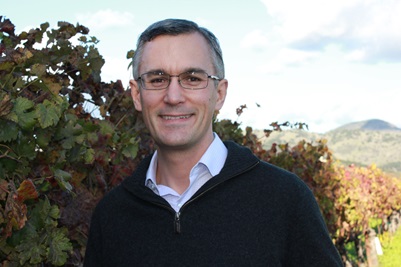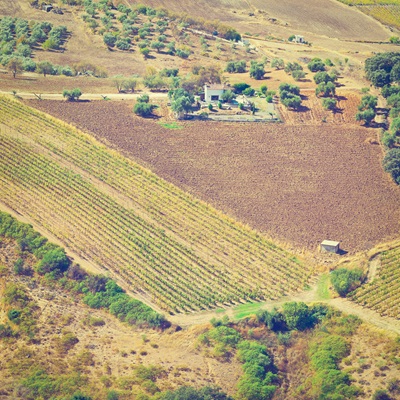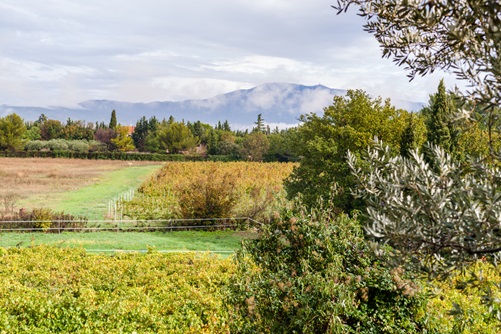Wine time with Master Sommelier Andrew McNamara Part 1
Dec. 1, 2016

 Andrew McNamara knows wine. He is an encyclopedic font of information about the industry who has visited many of the world’s greatest winemaking regions, and his expert palate is a finely-honed analytic tool for flavors. But that is to be expected of the person serving as Chairman of the Court of Master Sommeliers, as well as Director of Fine Wines for Breakthru Florida. We sat down recently for a chat with McNamara about his experiences in the world of wine and where he sees the industry going in the future.
Andrew McNamara knows wine. He is an encyclopedic font of information about the industry who has visited many of the world’s greatest winemaking regions, and his expert palate is a finely-honed analytic tool for flavors. But that is to be expected of the person serving as Chairman of the Court of Master Sommeliers, as well as Director of Fine Wines for Breakthru Florida. We sat down recently for a chat with McNamara about his experiences in the world of wine and where he sees the industry going in the future.
Breakthru: How did you get into wine and become a master sommelier?
Andrew McNamara: I was a stockbroker after college for about six years and hated every single minute of it. When I left that job, my wife at the time quit her job, too, and we decided we needed to do something different. We needed to live a better life. After a few months of trying to figure out what I wanted to do, she said, “you should really get a job at the wine shop that you buy your wine from.” So I did. I got a part-time job stacking shelves at the wine shop in the basement of the department store in Charlotte, North Carolina. It gave me an opportunity to study wine, and I got excited about it.
There had been a master sommelier who had worked at the wine shop years before, and the owner suggested I pursue that certification. I took the introductory course in 2003, and I knew this is what I wanted to do. I put all of my energy and effort into it. After working at the wine shop for about two-and-a-half years, I had an opportunity to become the seller at the Breakers Resort in Palm Beach Florida and eventually was running the beverage program for their highest-end restaurant and bar and had sommeliers working for me. We sold some of the great wines of the world in that restaurant. It gave me the opportunity to experience many of the greatest wines that have ever existed.
Breakthru: What do you have to go through to become a master sommelier?
AM: Right now, it’s about 8-10 years from start to finish to become a master sommelier. The master’s pass rate is about 3%.
There are four courses and examinations. The first is the two-day introductory course with a multiple choice test on the world of beverage alcohol, covering wine, spirits and beer. Then, we have what is known as the certified sommelier exam. That’s a one-day exam where you do service and blind tasting. About 45% or 50% of the people get through that. Once you pass the service side sommelier examination, you can apply for the advanced sommelier course, which is much more in-depth, and at that point the pass rate drops to about 25%-35%. When you pass that you’re then eligible to take the master sommelier theory exam. That’s an oral theory exam where we just fire questions across the table about the world of beverage alcohol. And then when you pass that then you are eligible to do the tasting exam, which is six wines in 25 minutes. You have to go through and correctly identify the wines. Then, there is the service examination where we put people in very uncomfortable situations just to see how much they really know. When you pass all three of those, you’re a master sommelier.
That’s all it takes. It’s only been in the last 12-13 years that being a sommelier or being in beverage alcohol really has gotten a lot of attention as a great career in the U.S.
Breakthru: Do you have an idea of how many of you there are out in the world right now?
AM: I do. I’m actually Chairman of the Court of Sommeliers. I run the organization in North and South America, in parts of Asia and other parts around the world. In the U.S. there are 147 Sommeliers. Around the world we are 230. There are five of us at Breakthru.

Breakthru: What regions should our customers be looking to add to their wine lists or their shelves this year and coming up soon?
AM: Rosé has really exploded this year. It’s always been fairly popular but we’re seeing more options for rosé. We’re seeing rosé coming out of California, Oregon, Washington, Spain and Italy. Even places like South Africa and South America, everybody really seems to be jumping on rosé. Pink is no longer a color that fine wine drinkers are afraid of – they embrace it.
Also, I think people are embracing sparkling wine again. They’re not viewing it as just a celebratory wine. There are so many options with great Prosecco and domestic sparkling wine coupled with true French champagne. South America continues to be hot. Chile has managed to stage a renaissance and Argentina continues to lead. I think a lot of younger wine consumers are not afraid of jumping outside of the traditional wine-going areas and traditional grape varietals. We’re seeing wines from some of the villages of Burgundy coming into favor. We’re seeing wines from some of the lesser known regions of Italy coming into favor. We’re seeing wines from Greece growing very rapidly and the quality being extraordinary for the price point. We’re seeing people not being afraid to experiment and jump around a little bit.
Breakthru: Which winemaking regions have you visited?
AM: I’ve spent time in Spain and all over France. I go to France more often than anywhere else. I’ve also experienced Germany, Austria, Italy, Australia, South Africa and South America. I have not been to New Zealand, Argentina or Portugal. Greece is very high on my wine bucket list right now, too.
Breakthru: When you’re visiting these regions, what do you look for?
AM: Every time I go, I always look to get a good idea about what’s going on with the vintage that is currently available. I look for ideas about what the next vintage or vintages are going to be–both in terms of quality and style. I try to be able to paint a broad picture of what Burgundy was like in 2013 versus Tuscany or Napa. I want to get a good idea for myself, and not just read what other people tell, of the characteristics of that particular vintage. Every year has its own signatures and its own hallmarks, and it’s just trying to figure out what those hallmarks are.
Breakthru: California wines don’t always get a lot of respect internationally, but that’s changing. What draws you to the Napa wines?
AM: Consistency. I know that no matter what happens when I open that bottle of wine, I have a really good idea of what I’m going to get. I can’t always say the same about a bottle of Burgundy or necessarily an Italian red all the time. And I’m certainly not saying those aren’t great wines, they’re amazing wines. Without question, they are my favorite, but there’s a level of consistency that I love when I open the bottle and I know what I’m going to get.
Breakthru: Describe your experience with Burgundy wines.
AM: Burgundy is by far my favorite still wine region. I love Champagne and sparkling wine, but Burgundy is one of those regions that no matter how often I visit, it’s still perplexing. It’s still new because as much as it’s rooted in history and tradition, you never know 100% what you’re going to get. It gets me excited, because I’ve had bottles that are “village wines” that are some of the very best I’ve ever had. In some ways, it defies logic because based on the vintage and the vineyards and the time that you’re drinking it, you never 100% know what you’re going to get with it. Even the same bottles opened days apart can taste very different from each other and I love that. The wine geek side of me loves that side of it. It’s always an adventure. Even if I’ve had that bottle before, this one might be slightly different and that to me is what makes it so interesting. It’s part of the reason I love wine so much.

This interview has been edited for space
Read Part 2 in our conversation with Andrew McNamara